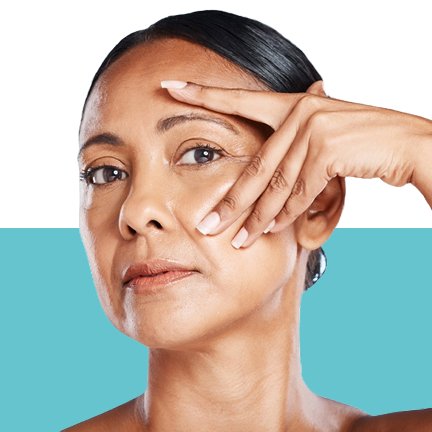
Introduction
Laser treatments have revolutionized the skincare industry, offering a targeted and effective way to address various skin concerns. Among the most popular options is the Q-Switch laser, which is used for treating pigmentation, scars, and even removing tattoos.
If you’re looking for a solution to uneven skin tone, acne scarring, or sun spots, the Q-Switch laser might be an ideal treatment. This article will explain what Q-Switch laser technology is, how it works, the skin conditions it can improve, its benefits, and what you can expect from the treatment. By the end of this post, you’ll have a clear understanding of whether this advanced laser treatment is the right choice for your skincare needs.
What Is Q-Switch Laser Technology?

The Q-Switch laser is a cutting-edge dermatological tool that uses highly focused bursts of light energy to treat various skin concerns. The term “Q-Switch” refers to the way the laser emits light in rapid, intense pulses, typically lasting a few nanoseconds. These quick bursts of energy are effective in targeting specific skin issues with precision, without harming surrounding healthy tissue.
There are different types of Q-Switch lasers, including:
- Nd:YAG (Neodymium-doped Yttrium Aluminum Garnet): This is the most commonly used Q-Switch laser. It’s effective for treating deeper skin layers and addressing various skin concerns, including pigmentation and tattoo removal.
- Ruby Laser: The Ruby laser works on more superficial layers of the skin, making it ideal for pigmentation issues and lighter skin tones.
- Alexandrite Laser: Known for its efficiency and precision, this laser is used to treat a variety of skin conditions, especially in lighter skin types.
Each of these lasers has a specific wavelength, allowing them to target different types of pigments or skin layers, making them versatile and effective in treating diverse skin concerns.
How Does Q-Switch Laser Work?
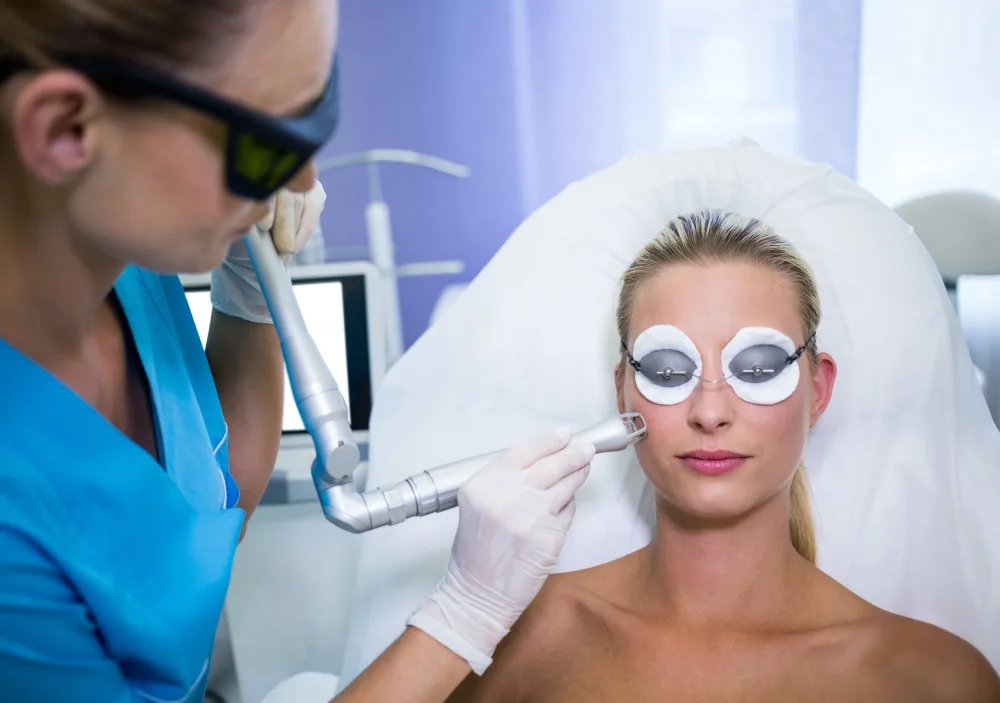
The Q-Switch laser works by delivering short, high-energy pulses of light into the skin. These light pulses are absorbed by pigments (like melanin in the skin or tattoo ink), which absorb the energy and break down into smaller particles. These smaller pigment particles are then naturally removed from the body’s immune system. Because of its ability to target specific pigments while leaving surrounding skin unharmed, the Q-Switch laser is particularly effective for treating pigmentation issues and removing tattoos.
Here’s the process in more detail:
- Light Energy Absorption: The laser’s light pulses are absorbed by pigments in the skin (such as dark spots or tattoo ink).
- Pigment Breakdown: The energy from the light pulses fragments the pigment into smaller pieces.
- Natural Elimination: Once the pigment is broken down, the body’s immune system clears the particles, resulting in clearer skin.
This unique mechanism makes Q-Switch laser treatments efficient, as they target the problem areas without damaging healthy skin.
Common Skin Issues Treated with Q-Switch Laser

The versatility of the Q-Switch laser means it can address a wide range of skin concerns. Here are some common skin issues treated by this technology:
Hyperpigmentation: Dark spots, age spots, sun spots, and melasma are all forms of hyperpigmentation, which the Q-Switch laser can treat effectively. The laser targets the excess melanin in the skin and breaks it down, helping to fade these dark spots.
Acne Scarring: Post-acne scars are a common concern, and Q-Switch lasers can help improve skin texture. By stimulating collagen production, the laser reduces the appearance of scars, leaving the skin smoother and more even.
Sun Damage: Excessive sun exposure can lead to discoloration and sun spots. The Q-Switch laser can address these concerns by targeting and breaking down the pigment, leading to a more uniform skin tone.
Freckles: For those who find their freckles unwanted, the Q-Switch laser offers a solution by lightening or eliminating these pigmented spots.
Tattoo Removal: One of the most popular uses of the Q-Switch laser is tattoo removal. The laser targets the tattoo ink and breaks it down into smaller particles, which are then gradually eliminated by the body. This makes it one of the most effective options for removing both professional and amateur tattoos.
Fine Lines and Wrinkles: Though primarily used for pigmentation and tattoos, the Q-Switch laser can also help stimulate collagen production, which can reduce the appearance of fine lines and wrinkles over time.
Advantages of Q-Switch Laser for Skin Rejuvenation

There are several reasons why Q-Switch lasers have become a popular choice for skin rejuvenation:
- Non-Invasive: Q-Switch laser treatments are non-invasive, meaning they don’t require any surgery or needles. This makes them appealing to individuals who prefer a more comfortable and less invasive solution.
- Minimal Downtime: One of the key benefits of Q-Switch lasers is the minimal recovery time. After treatment, most people can return to their daily activities immediately, though there may be some redness or swelling in the treated area for a few hours or days.
- Versatility Across Skin Types: Q-Switch lasers can be adapted to treat a variety of skin types. Whether you have fair, medium, or darker skin tones, there is a Q-Switch laser that can be used to treat your specific skin concern.
- Quick Results: Many patients begin to notice improvements after just one or two treatments. Results can appear in as little as a few weeks, depending on the skin condition being treated.
- Long-Lasting Effects: The results of Q-Switch laser treatments can last for a long time, especially if you maintain proper skincare and avoid excessive sun exposure.
What to Expect from a Q-Switch Laser Treatment
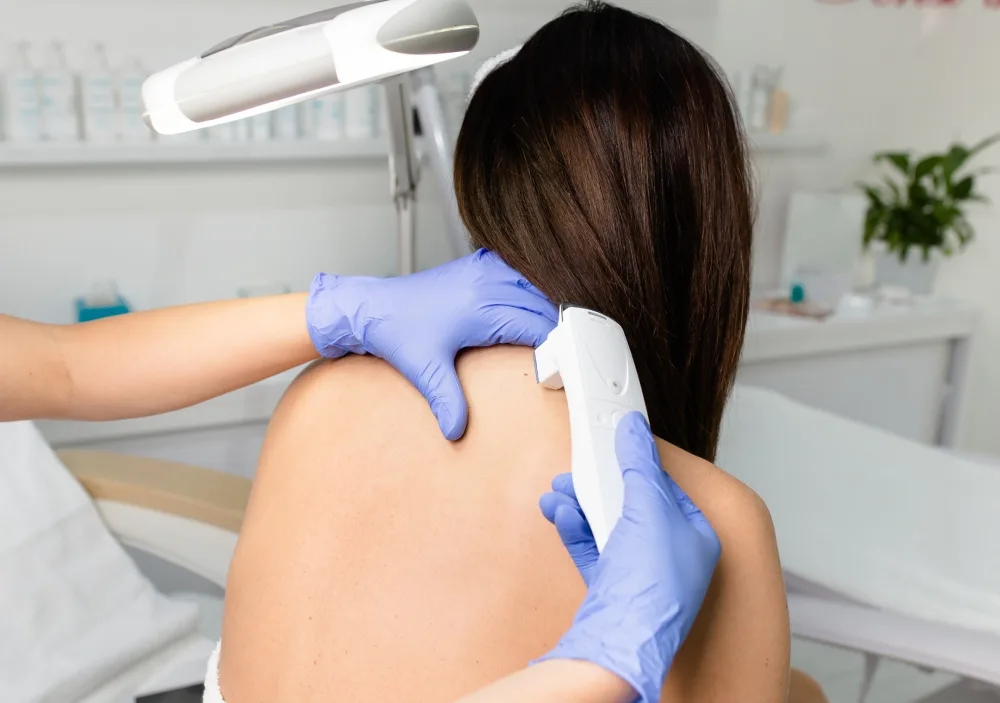
Before undergoing a Q-Switch laser treatment, you’ll need to schedule a consultation with a certified dermatologist or licensed professional. They will evaluate your skin, understand your concerns, and determine if Q-Switch laser treatment is suitable for you.
The Treatment Process:
- Pre-Treatment: A topical numbing cream is usually applied to minimize discomfort during the procedure.
- The Procedure: The laser device is used to target the treatment area with rapid pulses of light. The procedure typically lasts between 20-30 minutes, depending on the size of the area.
- Post-Treatment Care: After the treatment, you may experience some redness or slight swelling. It’s essential to protect your skin from the sun and follow any aftercare instructions provided by your practitioner.
Is Q-Switch Laser Right for You?
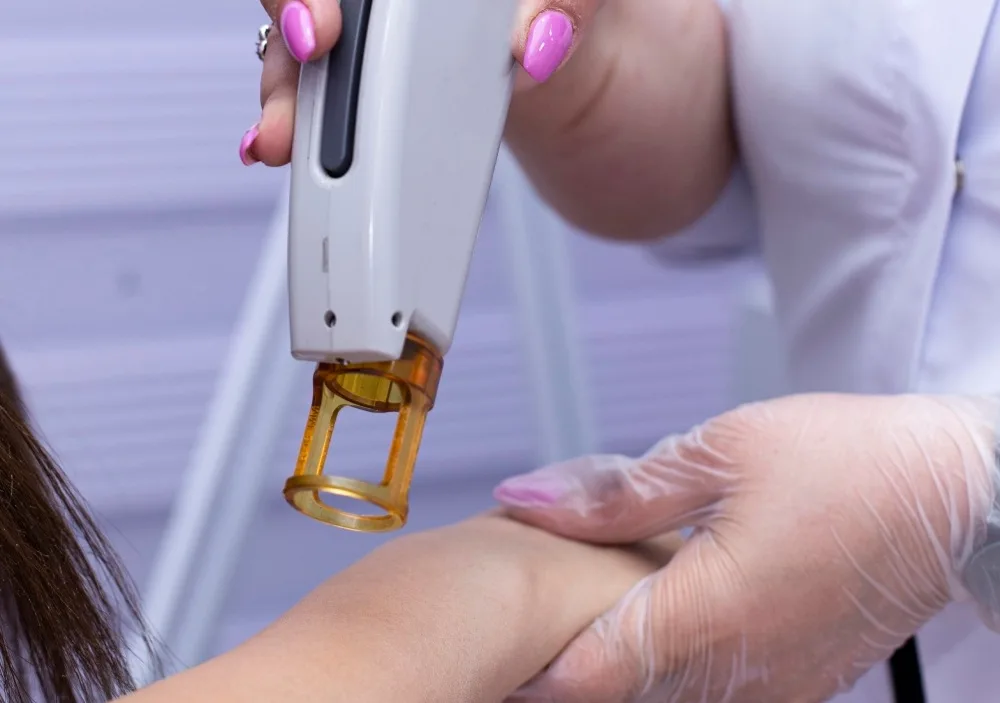
While Q-Switch laser treatments are effective for many people, not everyone is an ideal candidate. It’s important to consult with a dermatologist to determine if this treatment is appropriate for your skin type and concerns. Here are some factors to consider:
- Skin Type: Q-Switch lasers can treat most skin types, but some lasers are better suited for specific skin tones. For example, Nd:YAG lasers are often used for darker skin tones, while the Ruby laser may be more suitable for lighter skin.
- Current Skin Condition: If you have active skin conditions like eczema or rosacea, you may need to wait until they are managed before undergoing treatment.
- Health History: Be sure to discuss any underlying health conditions or medications that may affect your ability to undergo treatment.
Conclusion
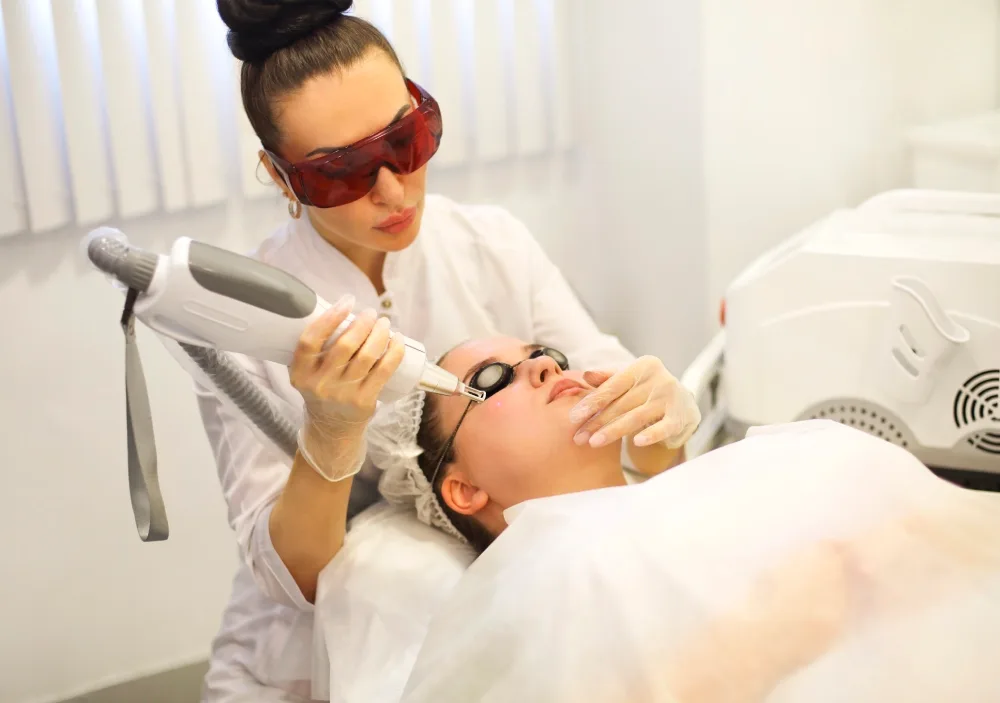
The Q-Switch laser offers a safe and effective solution for a variety of skin concerns, from pigmentation issues to tattoo removal and acne scars. With its precision and minimal downtime, it’s no wonder that this treatment is growing in popularity.
If you’re looking to rejuvenate your skin and address pigmentation or scarring, Q-Switch laser treatments may be the ideal option for you. Be sure to consult with a qualified professional to determine if this treatment aligns with your skincare goals.



